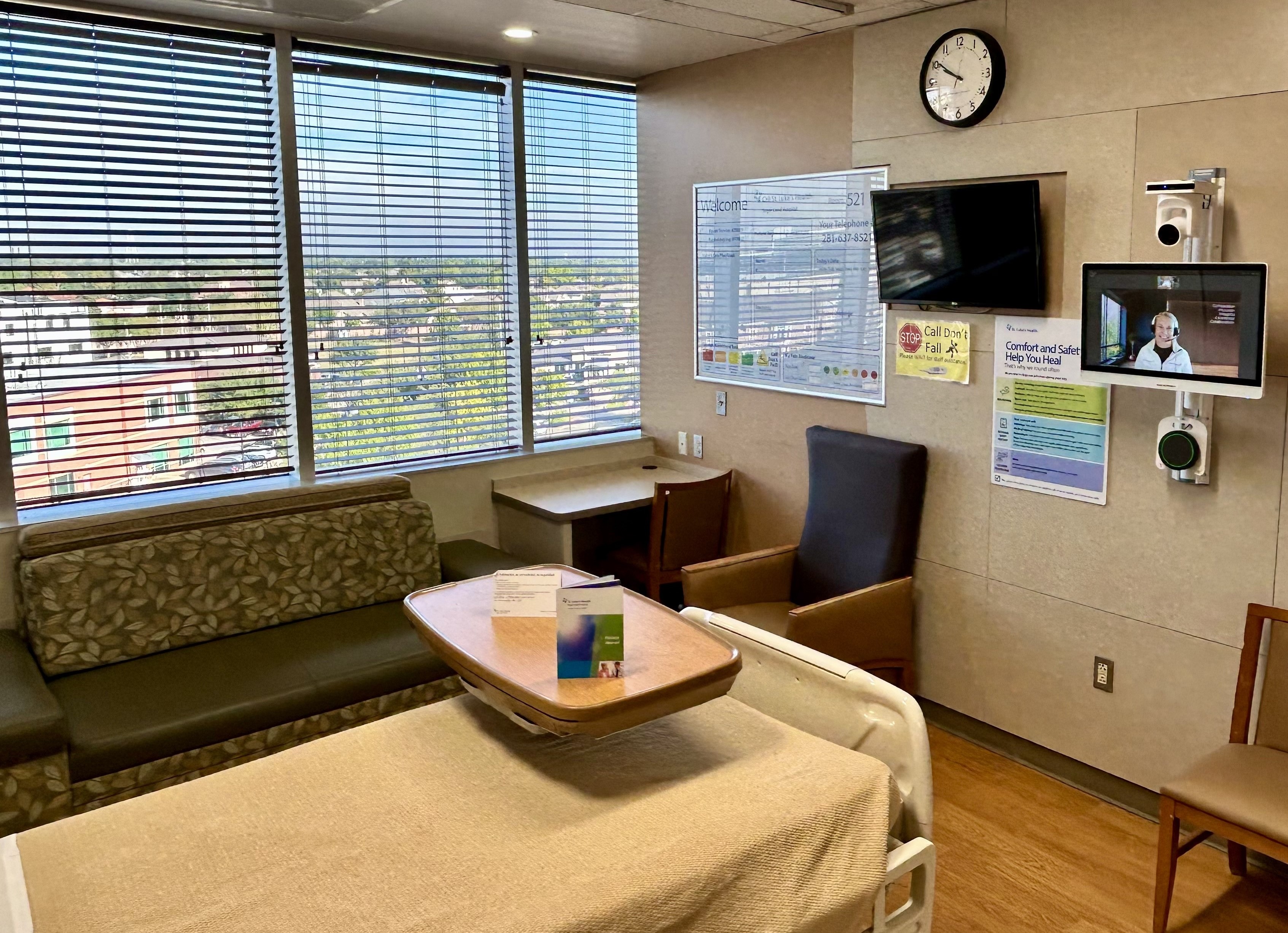A new kind of nurse is part of our care team — one who enters the patient room through a screen and makes a measurable difference in patient care. Virtually Integrated Care℠ (VIC) pairs experienced virtual RNs with bedside nurses and patient care assistants 24/7 at St. Luke’s Health-Sugar Land Hospital. The virtual team speeds discharges, enhances safety and keeps families connected, while giving bedside staff more time for hands‑on care. “They’re unburdening our staff so the nurses can spend their time where it matters most,” said Lyzanne Mason, MSN, RN, CCRN-CSC, Nursing Manager on the 5th Floor Medical‑Surgical unit.
How VIC works
A touchscreen Virtual Care Delivery Platform (VCDP) is installed in patient rooms and unit areas. Staff, patients or family members can tap to connect, or the virtual nurse can proactively “enter” a room after asking permission. Virtual nurses coordinate with the electronic health record and unit boards, perform purposeful rounds, handle routine monitoring, support education and manage much of the discharge workflow 24/7.
Why it matters for patients and nurses
VIC reduces administrative burden so bedside nurses can focus on clinical care. Virtual RNs prepare discharge packets, educate patients, arrange follow-up appointments, and facilitate some family calls — tasks that often consume an hour or more of bedside nurse time. As Mason explained, “One discharge can take 1 hour and 15 minutes from my staff — the VIC team is able to give that time back to our nurses.”
From bedside to virtual: a nurse’s view
“If I was to go back to bedside nursing, I would find a hospital that had virtual nursing,” said VIC nurse Leigha Lines, BSN, RN, CAVRN, who spent nearly a decade at the bedside prior to transitioning to virtual nursing. The VIC program, she said, allows the bedside nurse more time with their patients and a second set of eyes. “The collaboration, the communication, the teamwork is really fun to be a part of,” she shared. “I do miss some aspects of the bedside, but virtual care is also purposeful work for me. I feel fulfilled in how we support the patients, their families, and the bedside staff.”

Real-life impact
Extra reassurance during emergencies: After a rapid response for a patient with Parkinson’s disease and seizures, the patient’s daughter felt comfortable going home to rest because a VIC nurse continued to monitor overnight.
Accessible communication for all patients: For a deaf patient with a complex discharge after treatment for a pulmonary embolism, VIC enabled ASL video interpretation and careful walkthrough of a three-month medication plan. Bedside staff coordinated with the virtual nurse to make sure the patient and spouse fully understood the instructions.
Proactive safety checks: Virtual nurses look for safety issues — bed alarms, side-rail positioning, call-light reach — and remind staff or escalate concerns. “They can tell me as a leader if there’s a concern, which adds one more layer of safety and peace of mind,” Mason noted.
A new way to connect families: VIC makes it easy for relatives who can’t be at the bedside to join conversations. Virtual nurses can send a secure video link so family members can see the room, speak with staff and participate in care planning, explained South Region Director of VIC Nursing Care Laura Barker, MSN, RN, CVRN. “Virtual nurses can bring the whole care team together on one call — bedside nurse, provider and family — in ways that weren’t possible before,” she said.
What this means if you choose St. Luke’s Sugar Land
If you want care that combines skilled bedside nursing with technology that improves safety and communication, VIC delivers both. It strengthens teams, speeds and clarifies discharges, enhances monitoring, and makes care more accessible for diverse needs — from ASL interpretation to remote family involvement. Technology shouldn’t replace human care — it should extend it; VIC does both for patients and the nurses who care for them.
